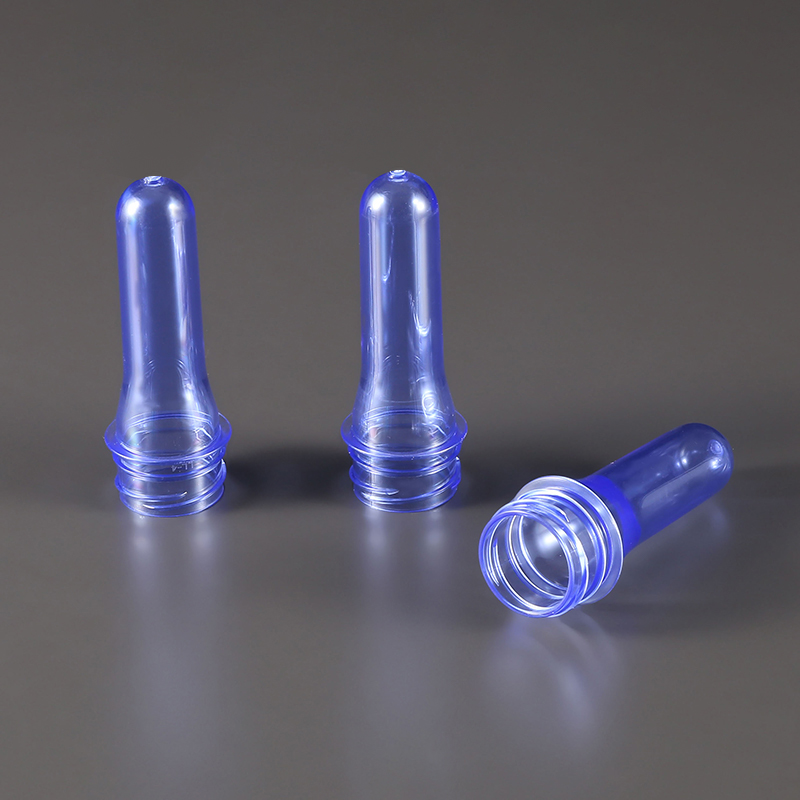PET preforms are made from polyethylene terephthalate resin, a thermoplastic polymer known for its mechanical properties, chemical resistance, and transparency. PET is favored for its ability to be recycled multiple times without significant loss in performance, making it an environmentally preferable option compared to other plastics.

The resin is typically modified with additives or colorants depending on the specific requirements of the end product. For instance, UV stabilizers may be included to protect light-sensitive contents, or pigments might be added to create colored bottles.
The production of PET preforms involves several precise steps, all designed to ensure consistency and quality:
Injection Molding: PET resin pellets are dried to remove moisture, then melted and injected into a mold cavity shaped like the preform. This mold creates the thick-walled, test-tube-shaped preform, including the threaded neck.
Cooling and Ejection: After the molten PET fills the mold, it is cooled rapidly to solidify the shape. The preform is then ejected and subjected to quality inspections to ensure it meets dimensional and material standards.
Conditioning: Preforms may undergo a conditioning process to achieve uniform temperature and crystallinity, which helps during the subsequent blow molding stage.
Storage and Transport: Preforms are lightweight and compact, making them easy to transport and store before being sent to bottle manufacturers for blowing and finishing.
The transformation of a PET preform into a bottle occurs through stretch blow molding, which can be done using either a single-stage or two-stage process:
Single-Stage Process: Injection molding and blow molding occur on the same machine. This method is often used for smaller production volumes or specialized bottles.
Two-Stage Process: Preforms are produced in one location and then shipped to another facility where they are reheated and blown into bottles. This is the common method for large-scale beverage packaging.
In the blow molding machine, the preform is heated until it becomes pliable, then stretched axially by a rod while compressed air inflates it inside a bottle-shaped mold. This dual action orients the PET molecules, enhancing the strength and clarity of the final container.
The adoption of PET preforms in bottle manufacturing offers several practical benefits:
Efficiency in Transportation and Storage: Preforms are compact and lightweight, significantly reducing transportation costs and storage space compared to finished bottles.
Flexibility in Design: Manufacturers can produce a wide variety of bottle sizes and shapes from a standardized preform, enabling customization without changing the base material.
High Strength and Clarity: The stretch blow molding process results in bottles with mechanical strength and clear, attractive appearance suitable for consumer products.
Sustainability: PET is highly recyclable, and the efficient use of materials in preforms reduces waste and energy consumption during production.
PET preforms are used extensively in multiple industries due to their versatility:
Beverage Industry: Water, carbonated drinks, juices, and energy drinks are often packaged in PET bottles made from preforms due to their durability and light weight.
Food Packaging: Cooking oils, sauces, and edible liquids frequently use PET bottles for their barrier properties and ease of handling.
Personal Care and Cosmetics: PET preforms allow the production of bottles for shampoos, lotions, and other cosmetic products that require clarity and chemical resistance.
Pharmaceuticals: Some liquid medicines and health supplements are packaged in PET bottles for their safety and transparency.


 English
English Español
Español 中文简体
中文简体